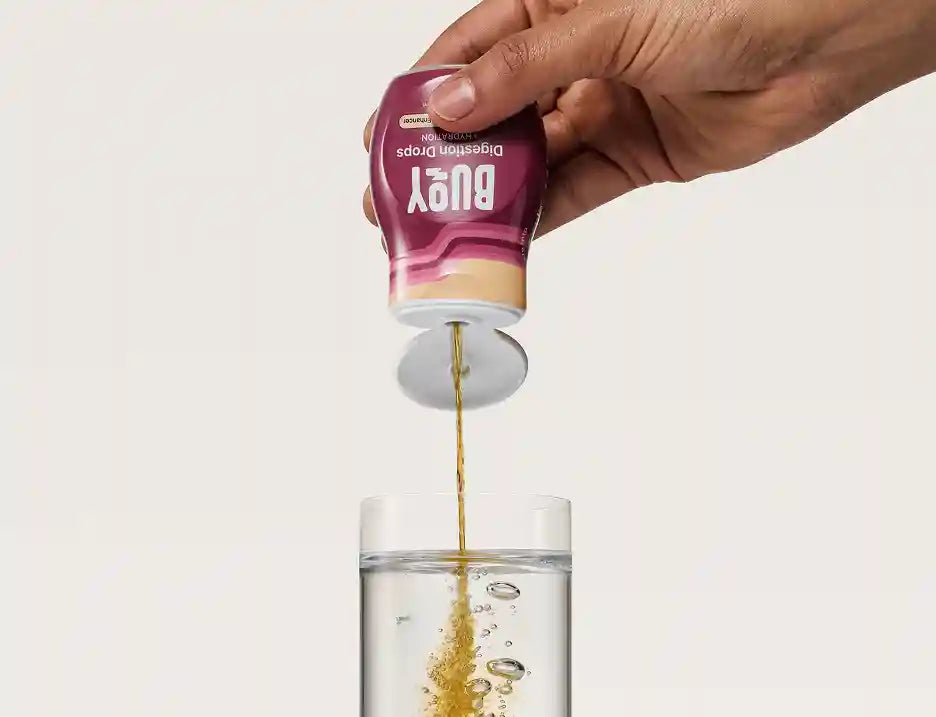
Understanding POTS Comorbidities
Living with Postural Orthostatic Tachycardia Syndrome (POTS) is challenging enough, but did you know it often comes with other health conditions, known as comorbidities?
These are additional illnesses, like Ehlers-Danlos Syndrome and Chronic Fatigue Syndrome, that often occur alongside POTS and can make managing it even more complicated.
In this guide, we’ll take you through what these comorbidities are, why they’re so common with POTS, and how recognizing and managing these POTS associated conditions can make a real difference in your daily life.
Essential Takeaways:
- Comorbidities Can Complicate POTS Management: Understanding the conditions that often accompany POTS is crucial for effective treatment. These comorbidities can interact with POTS symptoms, making diagnosis and treatment more complex.nhdx
- A Holistic Approach is Key: Managing POTS with comorbidities requires a big-picture view of your health. By addressing all your conditions together, you can develop a more effective, personalized treatment plan that improves your overall quality of life.
By the time we’re done, you’ll have a better understanding of why treating POTS often means dealing with more than one condition and what you can do to overcome this multi-layered health challenge.
- What Are Comorbidities?
- Common Conditions Associated with POTS
- How Comorbidities Affect POTS Management
- Living with Multiple Conditions
- Managing POTS and Its Comorbidities
What Are Comorbidities?
Let’s start with the basics. Comorbidities are separate health conditions that often show up alongside POTS, making your health journey a bit more… interesting.
With POTS, comorbidities are pretty common. These additional conditions with POTS can affect different parts of your body and complicate your symptoms and treatment (1).
What Causes Comorbidities?
Now, you might be wondering, “Why me? Why do I have to deal with multiple conditions?” Well, the truth is, experts are still figuring that out.
But here’s what we do know: POTS affects your autonomic nervous system, which controls a lot of your body’s automatic functions. When this system goes haywire, it can open the door for other health issues to sneak in (1).
Shared Underlying Causes
Plus, some of these conditions might share underlying causes with POTS. For example, issues with connective tissue or blood volume regulation could contribute to both POTS and some of its common comorbidities (1).
Genetic and Environmental Factors
Recent research suggests that genetic factors may play a role in both POTS and its comorbidities. Some studies have identified genetic variations that could predispose individuals to autonomic dysfunction and related conditions.
For instance, certain genes involved in collagen production have been linked to both POTS and Ehlers-Danlos Syndrome.
Environmental Triggers
Environmental factors might also contribute to the development of POTS and its comorbidities.
Viral infections, for example, have been associated with the onset of both POTS and Chronic Fatigue Syndrome in some cases. Stress, trauma, and major life changes have also been noted as potential triggers.
Continuing Research
It's important to note that research in this area is ongoing. Scientists are continually working to unravel the complex relationships between POTS and its associated conditions, which could lead to better diagnostic tools and treatment options in the future (1,2).
To better understand why POTS and its comorbidities occur, check out our guide to Understanding the Causes of POTS.
Common Conditions Associated with POTS
So what conditions are often associated with POTS? Let’s find out.
Ehlers-Danlos Syndrome (EDS)
EDS is a group of disorders affecting connective tissue. It causes joint hypermobility and skin elasticity. Many POTS patients also have EDS, likely due to how both conditions affect blood vessels and autonomic function.
Chronic Fatigue Syndrome (CFS)
CFS is characterized by severe, unexplained fatigue that doesn't improve with rest. It shares symptoms with POTS like fatigue and cognitive difficulties (“brain fog”). The overlap can make diagnosis and treatment challenging.
Fibromyalgia
This condition causes widespread muscle pain and tenderness. It often coexists with POTS, complicating pain management. Both conditions can involve autonomic nervous system dysfunction.
Irritable Bowel Syndrome (IBS)
This condition causes widespread muscle pain and tenderness. It often coexists with POTS, complicating pain management. Both conditions can involve autonomic nervous system dysfunction.
Migraine Headaches
Migraines are severe headaches often accompanied by nausea, light sensitivity, and visual disturbances. They're prevalent in POTS patients and can worsen symptoms like dizziness and fatigue.
Anxiety and Depression
Let's face it—dealing with chronic health conditions is tough. It's no wonder that anxiety and depression frequently occur with POTS. These mental health challenges can affect how you cope with your physical symptoms and impact your overall quality of life.
Mast Cell Activation Syndrome (MCAS)
MCAS involves inappropriate activation of mast cells, leading to allergy-like symptoms. It's often seen with POTS and can complicate treatment due to medication sensitivities.
Autoimmune Disorders
Conditions like lupus or Sjögren's syndrome, where the immune system attacks healthy tissues, are more common in POTS patients. The exact connection is still being studied, but it's clear there's often a link (3,4,5).
Remember, having POTS doesn't guarantee you’ll have these other conditions, and vice versa. But being aware of these common health issues related to POTS can help you and your healthcare team provide more comprehensive care. If you're experiencing symptoms of these conditions, discuss them with your doctor for proper evaluation and treatment.

Migraines are another common POTS comorbidity. Learn more in our comprehensive guide.
How Comorbidities Affect POTS Management
Dealing with POTS is challenging enough, but when you add comorbidities in POTS to the mix, things can get even more complex. Let's break down how these additional conditions can impact your POTS management and what you can do about it.
Impact on POTS Management
How do comorbidities affect POTS management? Here are some common ways:
- Symptom Overlap: Many POTS comorbidities share symptoms with POTS itself. For example, both POTS and Chronic Fatigue Syndrome can cause extreme fatigue. This overlap can make it tricky to pinpoint which condition is causing which symptom, potentially complicating diagnosis and treatment.
- Diagnostic Challenges: When multiple conditions are present, diagnosing POTS can become more complex. Symptoms may overlap or mimic each other, making it difficult to distinguish between POTS and its comorbidities. This often requires a comprehensive evaluation by specialists familiar with autonomic disorders and related conditions.
- Treatment Interactions: Medications for one condition might affect another. For instance, some medications for anxiety could worsen orthostatic intolerance in POTS. It’s crucial to work with your healthcare team to find a treatment plan that addresses all your conditions without causing adverse interactions.
- Increased Complexity: Managing multiple conditions means juggling different treatment plans, medications, and lifestyle changes. This can be overwhelming and may require more frequent doctor visits and careful monitoring.
- Quality of Life Impact: The combined effect of POTS and its comorbidities can significantly impact your daily life, affecting everything from work and social activities to basic self-care tasks.
You might be wondering, “Can POTS lead to other health issues?” While POTS itself doesn't directly cause other conditions, the stress of living with a chronic illness can potentially contribute to the development or worsening of certain health issues.
Potential Health Consequences
For example, the challenges of managing POTS might lead to anxiety or depression in some individuals. Additionally, some of the underlying factors that contribute to POTS might also play a role in other conditions, which is why we often see these comorbidities occurring together.
Get guidance on how to manage your POTS symptoms with our article, Effective Treatments for POTS.
Living with Multiple Conditions
Managing POTS along with other health conditions can feel like a full-time job. But with the right strategies, you can navigate this complex health landscape more effectively. Here's some practical advice to help you along the way:
- Coordinate Your Care: Ensure all your healthcare providers are aware of your different conditions. Consider having a primary care physician who can oversee and coordinate your overall care.
- Keep Detailed Records: Maintain a symptom diary and medication log. This can help you and your doctors identify patterns and potential interactions.
- Organize Your Medications: With multiple conditions, you’ll often need to take many different medications to manage symptoms. Stay on top of your medication regimen by using a pill organizer to sort your medications by day and time, set alarms on your phone for medication reminders, and keep a list of your medications, including dosages and schedules, to share with healthcare providers. Learn more with our guide to Mastering your POTS Medication.
- Prioritize Self-Care: Focus on lifestyle factors that benefit multiple conditions, such as maintaining good sleep hygiene, staying hydrated, and eating a balanced diet.
- Practice Stress Management: Techniques like meditation, deep breathing, or gentle yoga can help manage stress, which can exacerbate symptoms of many conditions.
- Plan for Flare-Ups: Have a plan in place for when symptoms worsen. Create a “flare-up kit” with essentials like medications, electrolyte drinks, and comfort items. Discuss with your doctor what steps to take during a flare-up and have a list of activities you can still enjoy on low-energy days to keep your spirits up.
- Pace Yourself: Learn to balance activity with rest by breaking tasks into smaller, more manageable chunks and using energy conservation techniques like sitting instead of standing when possible. Listen to your body and rest when you need to, even if it means adjusting your plans.
- Be Patient and Flexible: Finding the right combination of treatments may take time. Be open to adjusting your management plan as needed.
- Educate Yourself: Learn about your conditions from reliable sources. The more you understand, the better equipped you'll be to advocate for your health.
- Build Your Support Network: You don’t have to deal with this alone. Connecting with others who have similar experiences can provide emotional support and practical tips for managing multiple conditions. To do this, you can join online or in-person POTS groups, educate your friends and family about your condition so they can better support you, and consider counseling to help manage the emotional aspects of chronic illness.
- Embrace Holistic Care: Given the complexities of managing POTS with comorbidities, a holistic approach to care is essential. This means looking at the big picture of your health, rather than treating each condition in isolation. A holistic care plan might include not only medications and lifestyle modifications but also complementary therapies, mental health support, and regular monitoring of your overall well-being.
Remember, while managing POTS with comorbidities can be challenging, it's not impossible. With the right approach and support, you can develop a comprehensive management plan that addresses all aspects of your health.
Always work closely with your healthcare team to ensure your treatment plan is tailored to your specific needs and conditions.
Latest Research and Future Prospects
The field of POTS research is dynamic, with new studies constantly shedding light on the condition and its comorbidities. Here's a glimpse into some recent developments and what they might mean for future treatment.
Emerging Treatments
Recent studies have explored new treatment options for POTS and its comorbidities. For instance, research into neurostimulation techniques shows promise for managing symptoms of both POTS and fibromyalgia.
Additionally, novel medications targeting specific aspects of autonomic dysfunction are in various stages of clinical trials.
Personalized Medicine Approach
There's growing interest in personalized treatment plans for POTS patients. This approach takes into account an individual's specific symptoms, comorbidities, and even genetic factors to tailor treatment more effectively.
While still in its early stages, this could lead to more precise and effective management strategies in the future.
Ongoing Research
Several clinical trials are currently underway, investigating everything from new medications to innovative non-pharmacological interventions. These studies aim to improve our understanding of POTS and its comorbidities, potentially leading to better diagnostic tools and treatment options.
As research progresses, it brings hope for improved quality of life for those living with POTS and its associated conditions. Stay informed about these developments, as they may open up new avenues for managing your health in the future.
Managing POTS and Its Comorbidities
Living with POTS and its associated conditions isn't easy, but you're not in this fight alone. Remember, understanding your conditions is the first step towards effectively managing them.
By recognizing the interplay between POTS and its comorbidities, you're already on the path to better health.
Seek Comprehensive Care
Don't hesitate to seek comprehensive care from healthcare providers who understand the complexities of POTS and its related conditions. A multidisciplinary approach, involving specialists who can address different aspects of your health, can make a world of difference in your overall well-being.
Stay Informed and Hopeful
Stay informed, stay connected, and most importantly, stay hopeful. Medical understanding of POTS and its comorbidities is constantly evolving, and new management strategies are always emerging.
Explore Our POTS Resources
Want to learn more about managing POTS and its associated conditions? We've got you covered. From diet and exercise tips to the latest treatment options, we're here to support you every step of the way.
Access our full library of POTS resources today and take the next step in your health journey.
You've Got This
Remember, you're stronger than you know. With the right information, support, and care, you can effectively manage POTS and its comorbidities. Here's to your health and well-being!

References:
- Cleveland Clinic. (Reviewed March 15, 2024). Comorbidities. Retrieved from https://my.clevelandclinic.org/health/articles/comorbidities
- American College of Cardiology. (2019). Postural Orthostatic Tachycardia Syndrome. Retrieved from https://www.acc.org/latest-in-cardiology/ten-points-to-remember/2019/03/12/14/51/postural-orthostatic-tachycardia-syndrome
- Benarroch, E. E. (2012). Postural Tachycardia Syndrome: A Heterogeneous and Multifactorial Disorder. Mayo Clinic Proceedings, 87(12), 1214–1225. Retrieved from https://www.ncbi.nlm.nih.gov/pmc/articles/PMC3547546/
- Raj, S. R., Fedorowski, A. & Sheldon, R. S. (2022). Diagnosis and Management of Postural Orthostatic Tachycardia Syndrome. CMAJ: Canadian Medical Association Journal, 194(10), E378–E385. Retrieved from https://www.ncbi.nlm.nih.gov/pmc/articles/PMC8920526/
- Steinberg, R. S., Dicken, W. & Cutchins, A. (2023). Narrative Review of Postural Orthostatic Tachycardia Syndrome: Associated Conditions and Management Strategies. Retrieved from https://www.uscjournal.com/articles/narrative-review-postural-orthostatic-tachycardia-syndrome-associated-conditions-and




